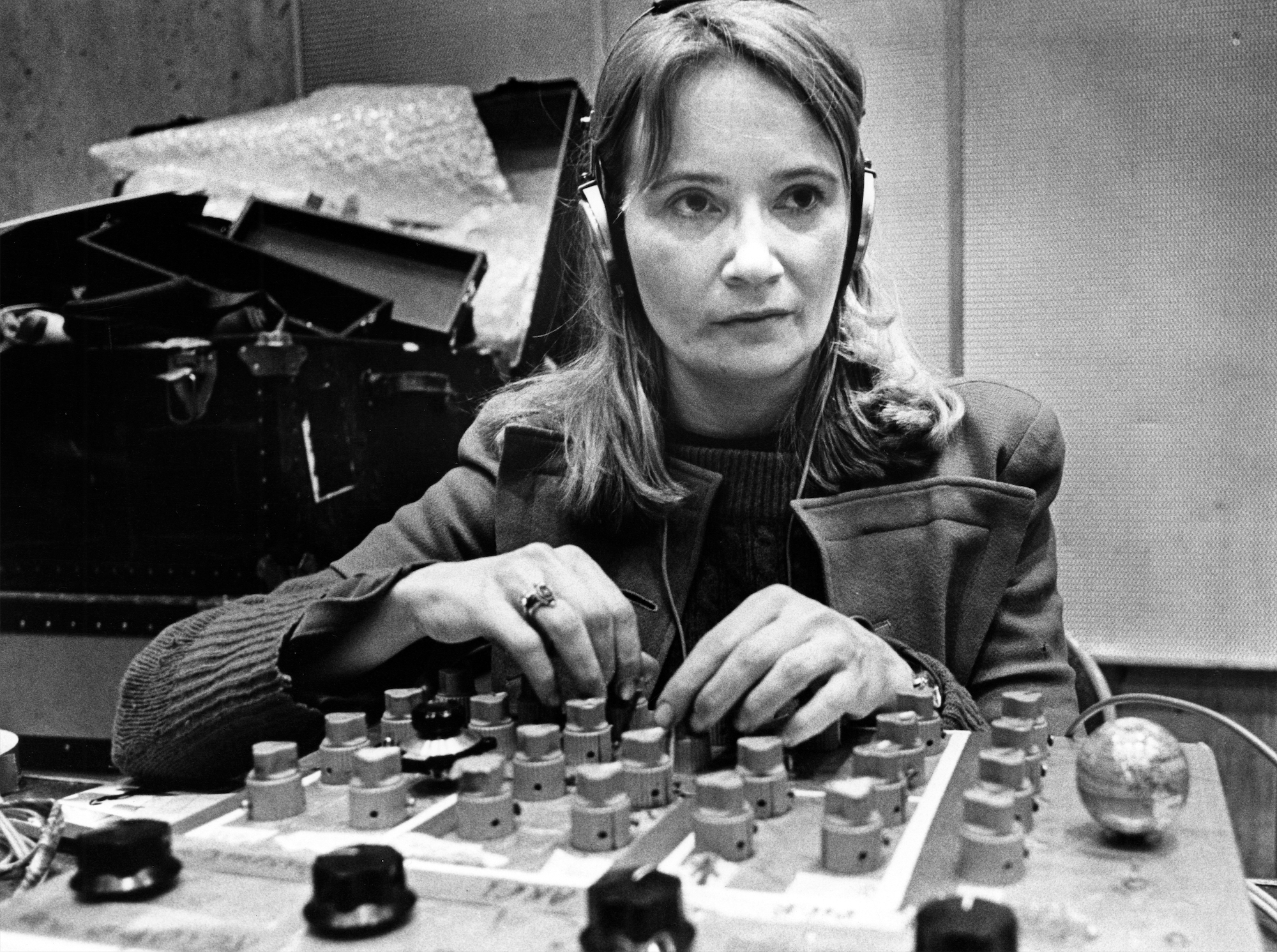

+ Google Map
$15 – $30
Get Tickets
Sound, space, and psychoacoustic phenomena are explored as three different facets of Maryanne Amacher’s creative work are joined together in a single evening for the first time. The program features two of Amacher’s rare compositions including live instruments: Adjacencies (for percussion and spatialized, four-channel electronics) and Petra (for two pianos). The artistic collective Supreme Connections will also create a site-specific interpretive installation using archival audio and visual materials. Each work will be staged in a different architectural space inside the beautiful and expansive Holy Apostles and The Mediator Church.
ACCESSIBILITY STATEMENT
Please note: Holy Apostles & the Mediator Episcopal Church is not wheelchair accessible. The entranceway to the main floor is approximately five steps above street level. The middle portion of the evening takers place on on the second floor of the building and requires going up and down one flight of stairs.
PROGRAM
Supreme Connections
performance installation by Bill Dietz, Sergei Tcherepnin, Keiko Prince, Woody Sullender, Nora Schultz, and Amy Cimini.
Amacher: Adjacencies (1965)
Robert Cosgrove, percussion
Russell Greenberg, percussion
Daniel Neumann, electronics
Woody Sullender, electronics
Amacher: Petra (1991)
Marianne Schroeder, piano
Emily Manzo, piano
Program duration approximately 120 mins.
This event is part of Maryanne Amacher: Perceptual Geographies.
PROGRAM NOTES
Maryanne Amacher (1938-2009) was a composer of large-scale fixed-duration sound installations and a highly original thinker in the areas of perception, sound spatialization, creative intelligence, and aural architecture. A collaborator with John Cage and Merce Cunningham, Amacher spent her formative years as an artist in Philadelphia, where she studied at the University of Pennsylvania with composer Karlheinz Stockhausen. She is frequently cited as a pioneer of what has come to be called sound art, although her thought and creative practice consistently challenge key assumptions about the capacities and limitations of this nascent genre.
Though Amacher is known primarily as an electronic composer, early on she wrote a handful of pieces for classical instruments using experimental forms of notation. AUDJOINS, a Suite For Audjoined Rooms was a collection of such works, from the early to mid-’60s, for various spatially staged ensembles. Adjacencies, a graphic score for two percussionists and electronics, was written in 1965 (during her time in Philadelphia) and is the only known extant score of that series. The work directs performers by sending their microphone signals to a changing array of speakers surrounding the audience, combining otherwise distinct worlds of sound. Not performed since 1966, Lawrence Kumpf’s New York City based presenting organization Blank Forms collaborated with Amacher scholars Amy Cimini and Bill Dietz to unpack and analyze the score for its posthumous realization. The work was given its modern premiere at The Kitchen in 2017 with Ian Antonio and Russell Greenberg of the experimental piano-percussion quartet Yarn/Wire, with sound distribution by Daniel Neumann and Woody Sullender.
Starting in the late seventies, the central focus of Amacher’s practice shifted to the site-specific transformation of architectural space, involving the measured, oblique placement of speakers behind walls and under floors to reimagine manmade structures as massive analog sound filters. Moving from the entire-building scale of her Music For Sound Joined Rooms to the Mini Sound Series, Amacher strategically incorporated a variety of visual elements as cues for suggested spatial navigation. Requiring prolonged venue access as well as considerable equipment, Amacher was almost never able to mount these costly works in the US before her death in 2009, presenting them largely in Europe and Japan. Inspired by vernacular serial formats, she emphasized that the architecturally staged pieces, as distinguished from a continuous installation or traditional concert genre, were intended as “an evolving sound work ‘to be continued.’”
In 2012 a group of Amacher’s former collaborators took up the baton, joining forces to collectively engage with the questions of the posthumous life of their friend’s site-adaptive work. Under the name Supreme Connections (the top secret sound lab featured in Amacher’s unrealised treatment, Intelligent Life), the loose formation developed a model for realizing Amacher’s radical approach in keeping with its complex conception of “the work.” Recreating the working methodology of Amacher’s later years through conscious interpretation rather than incongruously faithful reenactments, Supreme Connections created a series of large-scale “hearing as if” installations at the Funkhaus, Tate Modern, Bienal de São Paulo, and Stedelijk Museum. With a week of 24-hour venue access at their disposal for the collective’s first-ever project in the US, this iteration of Supreme Connections is comprised of Bill Dietz, Sergei Tcherepnin, Keiko Prince, Woody Sullender, Nora Schultz, and Amy Cimini.
Amacher’s 1991 piece Petra was originally commissioned for the ICSM World Music Days in Boswil, Switzerland. Written for two pianos, Petra is a unique example of Amacher’s late work, a direct extension of her working methodologies for electronic compositions taken into an acoustic realm that alludes to the music of Giacinto Scelsi and Galina Ustvolskaya. The piece is a sweeping, durational work based on both Amacher’s impressions of the church at Boswil and science-fiction writer Greg Bear’s short story of the same name, in which gargoyles come to life and breed with humans in a post-apocalyptic Notre Dame.
The piece will be performed by Marianne Schroeder, who originally performed the piece alongside Amacher in 1991, and Emily Manzo. Like much of Amacher’s work, a performance of Petra is not as straightforward as it might appear—there is no definitive score but rather a series of fragments and working notes left to be deciphered. This third ever performance is an expanded version based on a newly discovered notes and scores from the Maryanne Amacher Archive.
This event is part of Maryanne Amacher: Perceptual Geographies
- This event has passed.


